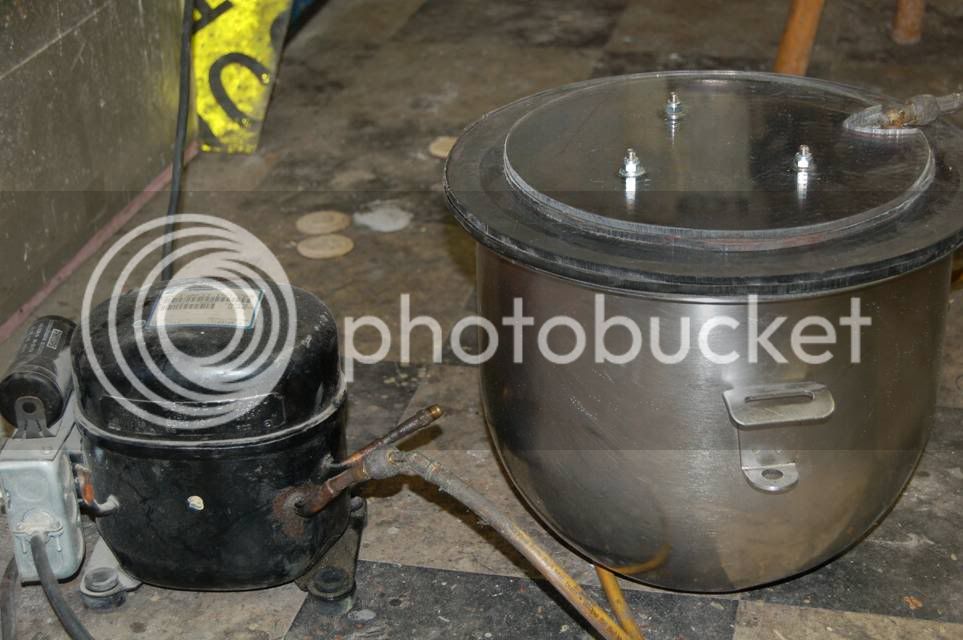Pulling a vacuum on hot wort would do a couple of things..
It would cause the wort to boil easier, at reduced pressure. The process of "boiling" under reduced pressure is endothermic, ie: heat is absorbed. If there is no longer a heat source, the temp WILL drop as the pressure is reduced further until the vapor pressure of the wort is equal to the reduced pressure from the vacuum. Cooling will ONLY occur during this period where the vapor pressure of the hot wort is higher than the reduction of pressure from the applied vacuum. It is the process of "boiling" under reduced pressure that causes the loss of heat.
This WILL chill the wort, but it will also generate a lot of water vapor (steam) that will either go through the vacuum pump (if it's a diaphragm pump) or it will get absorbed by the pump oil (if using a high-vac pump). If a high-vac pump is used, a cold-trap should be employed to condense out the water vapor as it will reduce pump efficiecy if absorbed into the oil.
It's an interesting idea, but honestly, it sounds like a lot of work for very little pay-off. Vacuum pumps are expensive, and one would need to have a boiling kettle that is vacuum tight. I don't think a pressure cooker would work, as they are designed to handle positive pressure, not reduced pressure. You would also need a lot of head space to handle the foaming/boiling of the wort as pressure is reduced. In the lab, we call this "bumping" and things can get out of control quickly if there is no internal agitation (like stirring with a stir plate).
Dry ice would be an option, as someone mentioned. I would be a little concerned about localized freezing of the wort. If the kettle is in contact with dry ice, it could potentially freeze it against the sides of the kettle if there is no internal stirring. Dry ice is really cold (-78C or -110F), so it could be possible to accidentally freeze the wort in contact with the sides of the kettle. stirring during the cooling process would be the only way to avoid this.
I work as a bench organic chemist, so I do have experience with this kind of stuff...
marz


















































![Craft A Brew - Safale S-04 Dry Yeast - Fermentis - English Ale Dry Yeast - For English and American Ales and Hard Apple Ciders - Ingredients for Home Brewing - Beer Making Supplies - [1 Pack]](https://m.media-amazon.com/images/I/41fVGNh6JfL._SL500_.jpg)







